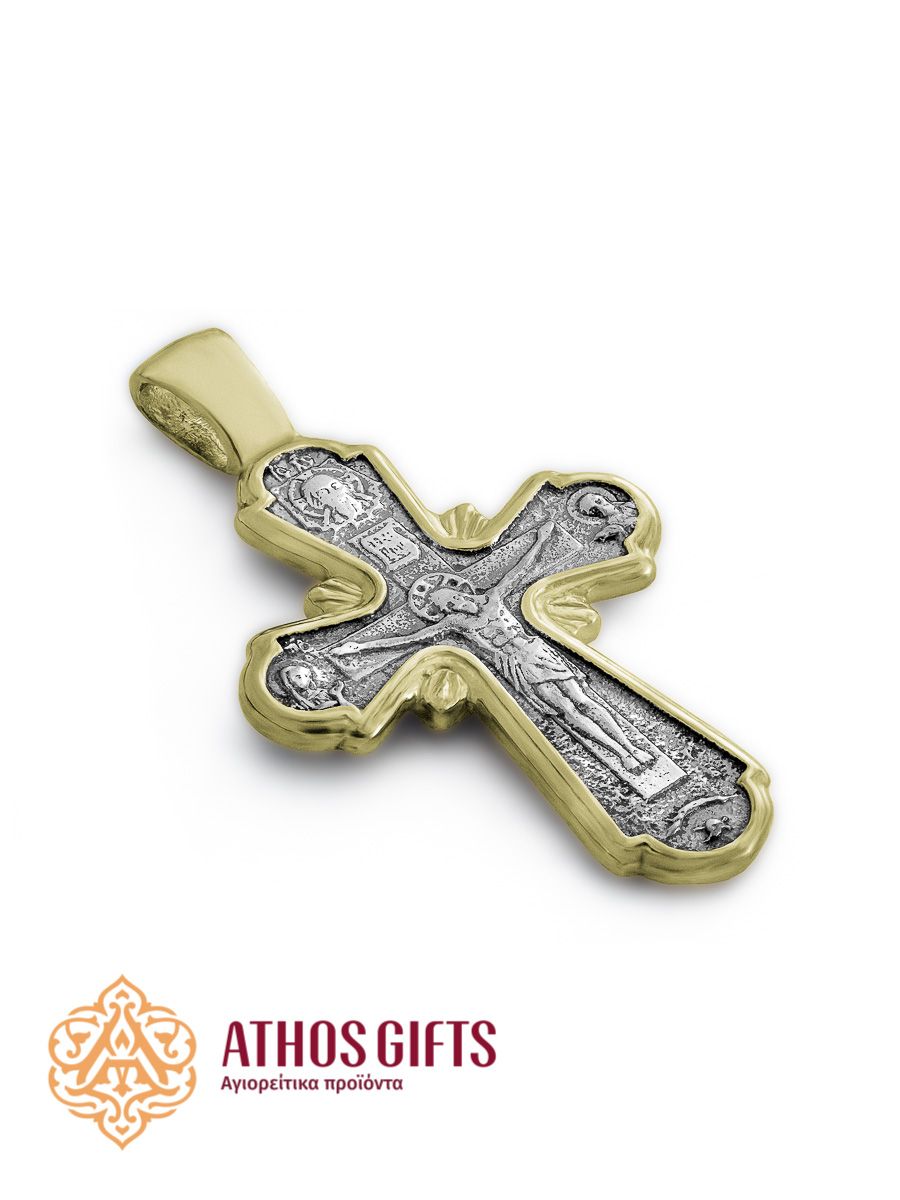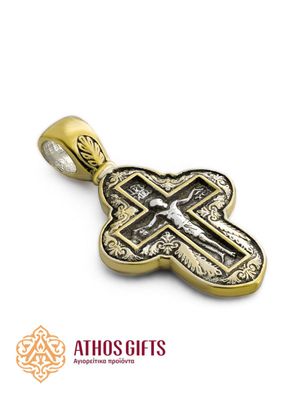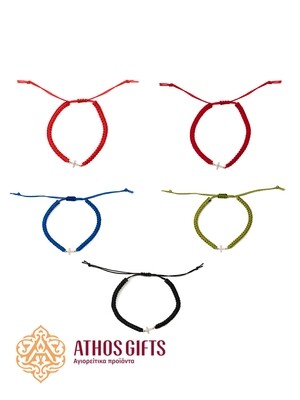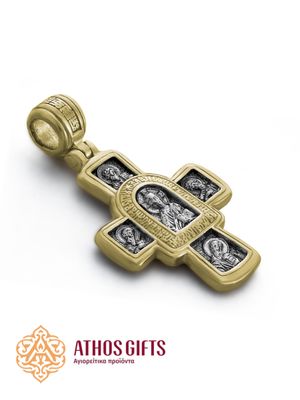Sterling silver cross with icon 3,9 cm
On the front side of the cross, the Crucifixion of our Lord Jesus Christ is depicted. On the arms of the cross, the figures of those standing in prayer are shown: the Mother of God to the right of Christ and John the Forerunner (John the Baptist) to the left. This composition is known as "Deisis", or "Deesis". The central meaning of such composition is the intercession of the Mother of God and St. John, pleading on behalf of humanity before the Lord. At the top of the cross, there is an image of the Mandylion (the Holy Face of Christ), which, according to biblical tradition, was imprinted on a cloth after Christ wiped His face with it.
The central element on the reverse side of the cross is the image of the Mother of God, the intercessor for the human race. Surrounding Her are depictions of the Evangelists, each with their respective symbol. According to Blessed Jerome (4th century), the Evangelists are represented as follows: Mark by a lion, John by an eagle, Matthew by an angel, and Luke by an ox. At the bottom of the cross is an image of Saint Nicholas the Wonderworker, the helper and protector of all true believers.
Orthodox Cross: History and Symbolism
The Orthodox Church honors the Cross as a great relic symbolizing the redemption of the human race. The honorable Cross of the Lord for the Christian faith is the highest symbol of sacrifice and sanctification, and therefore its significance is truly invaluable. The Cross and the Resurrection are the two main axes of Christianity: the Resurrection follows the Cross and implies the Cross, and the Cross predicts the Resurrection.
Before Christ was crucified for our sins, anyone who died through crucifixion was considered damned. After Jesus died on the cross, it became a symbol of redemption. From an instrument of death the cross became an eternal source of life, from a horrible instrument of execution it turned into a light and blessed sign.
This paradox and great change came about because immeasurable divine love and mercy did not avenge human ignorance and evil. The all-redeeming divine love leaves no room for hatred, anger, and malice. God as absolute love, instead of vengeance, had mercy on mankind, giving redemption from the bitter bonds of sin and evil, giving mankind eternal life. After the crucifixion, the cross became associated with the Lord Jesus Christ, drawing from Him its invincible power, sanctification and grace. That is why the worship of Christians to the Cross is not idolatry; it is the worship of Christ Himself. Christians proudly wear the cross in memory of the great atoning sacrifice and as an effective bulwark against evil.
The honorable Cross of the Lord is the unifying force of mankind. The two crossbars of the Cross symbolize the union of men with God (the vertical crossbar) and the union of men with one another (the horizontal crossbar). The last one also symbolizes the two arms of the Crucified Savior, which are open to embrace all mankind.






